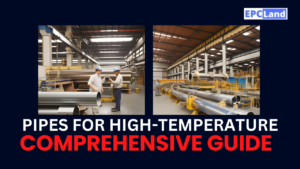Introduction
In the world of engineering, safety and compliance are paramount, especially when it comes to fuel gas piping systems. The ASME 31.2 Fuel Gas Piping Code stands as a beacon of security, providing guidelines and standards that safeguard the integrity of fuel gas pipelines. This comprehensive article delves into the intricacies of the code, its key components, and its role in ensuring a secure and efficient fuel gas piping network.
Table of Contents
ASME 31.2 Fuel Gas Piping Code: Understanding its Significance
As safety concerns continue to drive engineering standards, the ASME 31.2 Fuel Gas Piping Code emerges as a cornerstone. This code not only sets the stage for the construction and operation of fuel gas piping systems but also guarantees adherence to high safety standards. It ensures that fuel gas pipelines are designed, fabricated, and maintained with precision, reducing the risks associated with leaks, explosions, and other hazards.
Don’t miss the Complete Course on Piping Engineering: Check Now
By EPCLand.com
Key Components of the ASME 31.2 Fuel Gas Piping Code
The ASME 31.2 Fuel Gas Piping Code comprises several essential components that collectively contribute to its effectiveness. These components encompass the entire lifecycle of fuel gas piping systems, from design and installation to operation and maintenance.
Design and Construction Guidelines
Designing and constructing fuel gas piping systems demands a meticulous approach. The code outlines parameters for material selection, pressure ratings, sizing, and configuration. It emphasizes factors like pressure drop, temperature fluctuations, and stress analysis to ensure the longevity and stability of the system.
Installation Standards
Accurate installation is critical to the success of any piping system. The ASME 31.2 code sets forth guidelines for proper installation techniques, joint methods, and welding practices. These standards guarantee that the installed piping system maintains its integrity even under demanding conditions.
Inspection and Testing Protocols
Before a fuel gas piping system is put into service, rigorous inspection and testing are imperative. The code establishes procedures for non-destructive testing, leak detection, pressure testing, and more. These protocols identify potential vulnerabilities before they escalate into safety hazards.
Maintenance and Repairs
Maintenance is an ongoing process in any engineering system. The ASME 31.2 code provides recommendations for routine inspections, maintenance schedules, and repair methodologies. Following these guidelines ensures that the piping system remains in optimal condition throughout its operational lifespan.
ASME 31.2 Fuel Gas Piping Code in Practice
Putting theory into practice, the ASME 31.2 Fuel Gas Piping Code has a profound impact on various industries. From residential gas supply systems to industrial applications, adherence to the code guarantees that fuel gas piping networks are secure, efficient, and compliant with industry standards.
FAQs about the ASME 31.2 Fuel Gas Piping Code
Is the ASME 31.2 code applicable to both residential and industrial systems?
Yes, the ASME 31.2 code is applicable to both residential and industrial fuel gas piping systems. It ensures safety and compliance across various sectors.
Can deviations from the code’s guidelines be allowed?
Deviation from the code’s guidelines is discouraged, as they are established to ensure safety. If deviations are necessary, they should be carefully considered, documented, and approved by relevant authorities.
How often should inspections be carried out?
Regular inspections are recommended to identify potential issues before they become hazardous. The frequency of inspections depends on factors like the environment, operating conditions, and the specific requirements of the system.
What is the role of non-destructive testing in the code?
Non-destructive testing methods, as outlined in the code, allow for the assessment of a system’s integrity without causing damage. These tests help detect flaws, cracks, and vulnerabilities that might compromise safety.
Does the code evolve over time?
Yes, the ASME 31.2 code undergoes updates and revisions to incorporate advancements in engineering practices and technologies. Staying updated with the latest version is essential to ensure compliance.
Are there penalties for non-compliance with the code?
While the code itself doesn’t impose penalties, non-compliance can lead to safety risks, legal liabilities, and reputational damage. It’s in the best interest of all stakeholders to adhere to the code’s guidelines.
Conclusion
In a world where safety and compliance are paramount, the ASME 31.2 Fuel Gas Piping Code stands as a beacon of assurance. From its design and construction guidelines to its inspection and maintenance protocols, this code ensures that fuel gas piping systems operate seamlessly, minimizing risks and enhancing safety. By embracing the code’s principles, industries can build a future that’s not only efficient but also secure.
Recommended courses (Published on EPCLand):
- Basics of Piping Engineering
- Piping Layout Engineering
- Piping Material Engineering
- Piping Stress Analysis
- Complete Course on Piping Engineering
- Material Requisitions
- Piping Material Specifications
- Valve Material Specifications
Related Video
Attempt Quiz
Question 1:
What does ASME B31.2 refer to?
Explanation: ASME B31.2 is a code published by the American Society of Mechanical Engineers (ASME) that provides requirements for the design, construction, inspection, and testing of piping systems for fuel gases.
Question 2:
What types of piping systems are covered by ASME B31.2?
Explanation: ASME B31.2 covers piping systems for fuel gases, including requirements for their design, fabrication, inspection, testing, and maintenance.
Question 3:
Which organization publishes ASME B31.2?
Explanation: ASME B31.2 is published by the American Society of Mechanical Engineers (ASME), which is responsible for developing and maintaining various codes and standards in the field of mechanical engineering.
Question 4:
What is the primary purpose of ASME B31.2?
Explanation: The primary purpose of ASME B31.2 is to provide comprehensive requirements for the design, construction, operation, inspection, and maintenance of fuel gas piping systems.
Question 5:
Which material is commonly used for fuel gas piping systems in accordance with ASME B31.2?
Explanation: Carbon steel is commonly used for fuel gas piping systems in accordance with ASME B31.2 due to its strength and compatibility with fuel gases.



